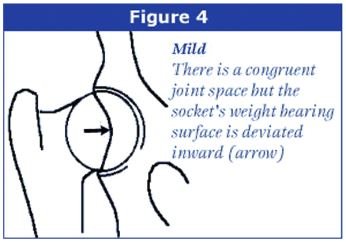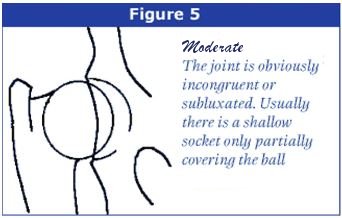Canine Hip Dysplasia
Canine hip dysplasia is a common inherited orthopaedic problem where abnormalities occur in the hip joints. The abnormalities will start at a young age as the puppy becomes more active and will become worse over time. These abnormalities can lead to excessive wear and tear of the hip joint, which can lead to one or both joints being defective. This can be extremely painful and can have serious effects on the health and behaviour of the dog.
Possible signs of hip dysplasia
- Lameness
- Stiffness after rest
- Exercise intolerance
- Groaning while resting or getting up
- Difficulty using stairs
Please note that only radiographs scored by an expert can be used as a measure of whether a dog has dysplasia or not. A single certificate, certified by a KUSA authorised veterinary radiologist, is issued reflecting the grade of hip and/or elbow dysplasia, where applicable, together with the microchip or tattoo number of the dog. (For more information, visit the KUSA website ).
Some dogs with severe hip dysplasia can go through their whole life and only start showing signs of it when they reach 8 or 9 years. Others have moderate dysplasia and endure pain and obvious discomfort at a very early age. But it is genetic and their offspring will inherit it, whether they showed physical signs or not.
Meaning of the Grades
The official hip and elbow dysplasia certificates in South Africa have FCI grades for hips and the old RSA grades for elbows. Below is a table showing the meaning of these grades.
FCI Grade | Description | FCI Criteria | Old RSA Grade |
A1 | Excellent Hips | No signs of hip dysplasia | 0 |
A2 | Good hips | 0 | |
B1 | Fair hips | Near normal hip joints | 0 |
B2 | Marginal dysplasia | 0 | |
C1 | Mild dysplasia | Mild hip dysplasia | 1 |
C2 | Mild to moderate dysplasia | 1 | |
D1 | Moderate dysplasia | Moderate hip dysplasia | 2 |
D2 | Moderate to severe dysplasia | 2 | |
E1 | Severe dysplasia | Severe hip dysplasia | 3 |
E2 | Very severe dysplasia | 4 |
Images to illustrate grades of hip (and elbow) dysplasia






